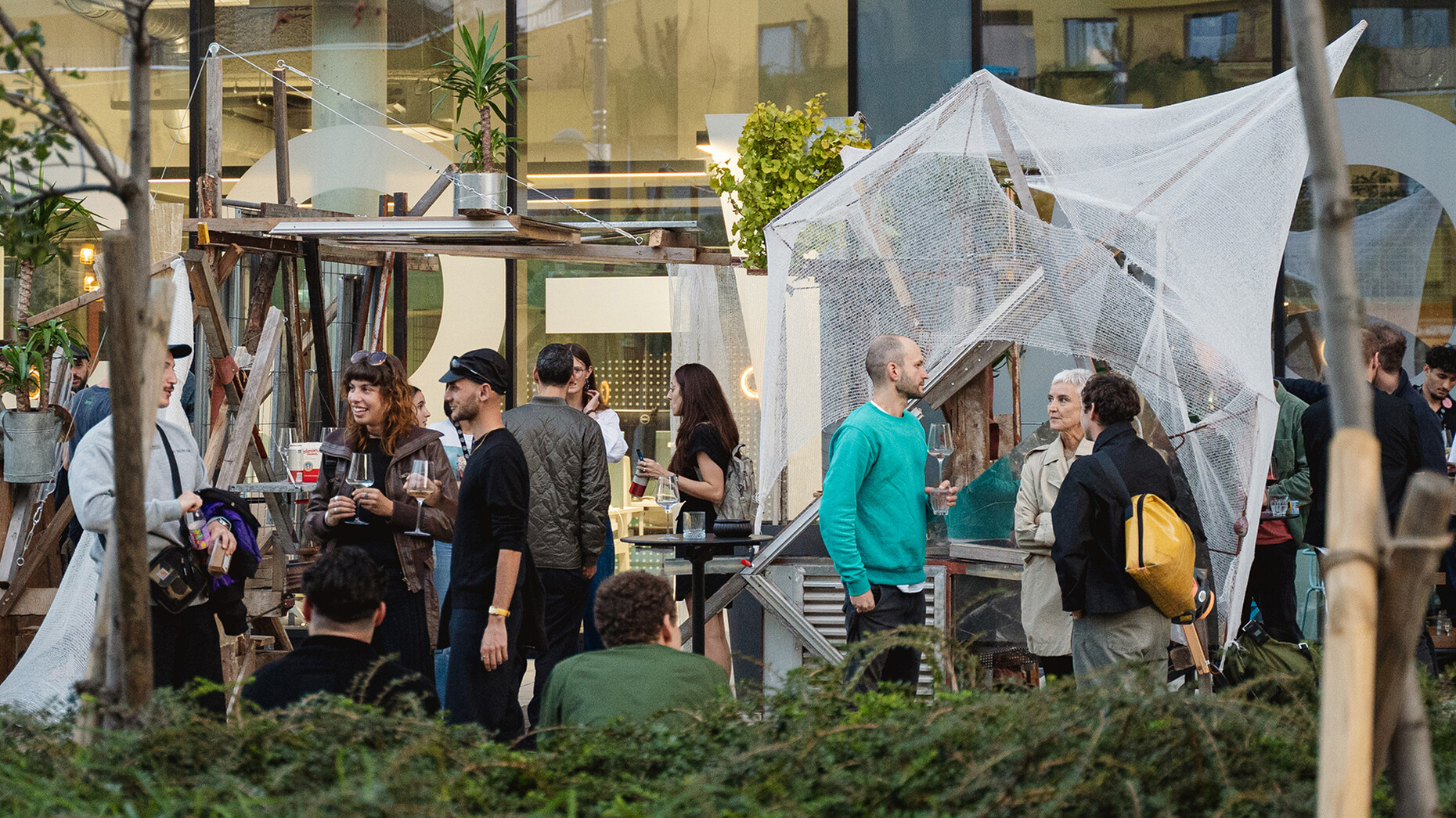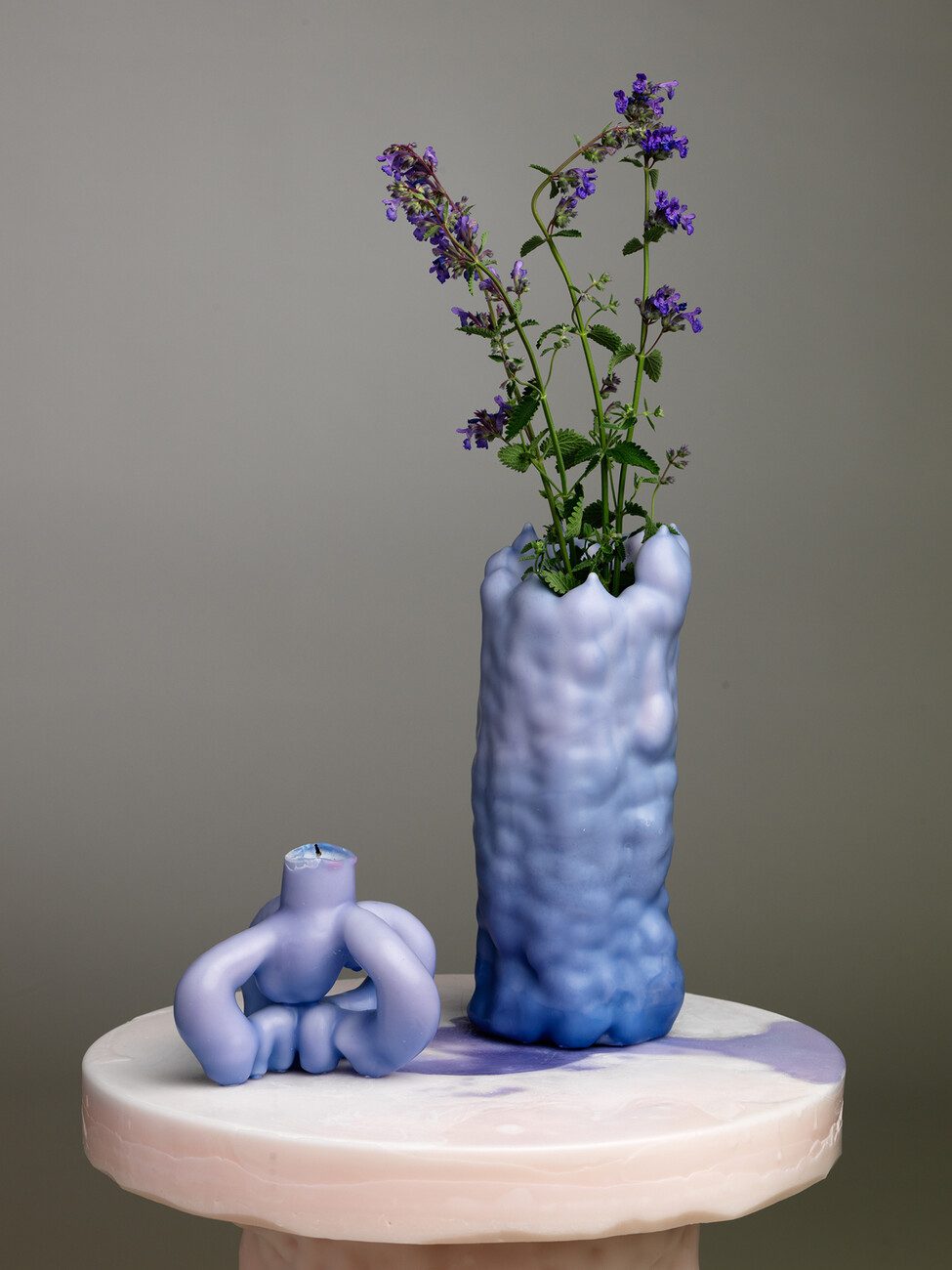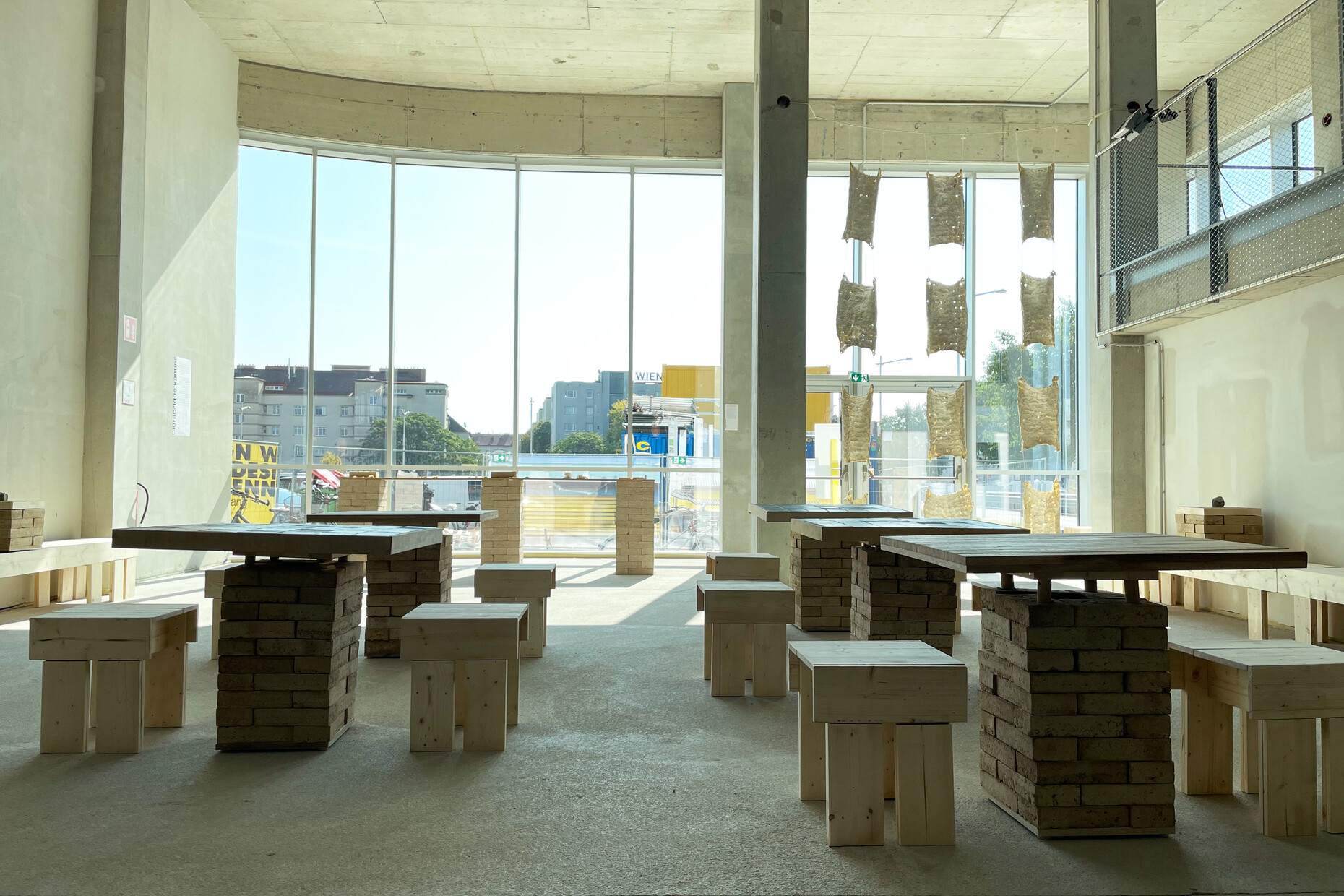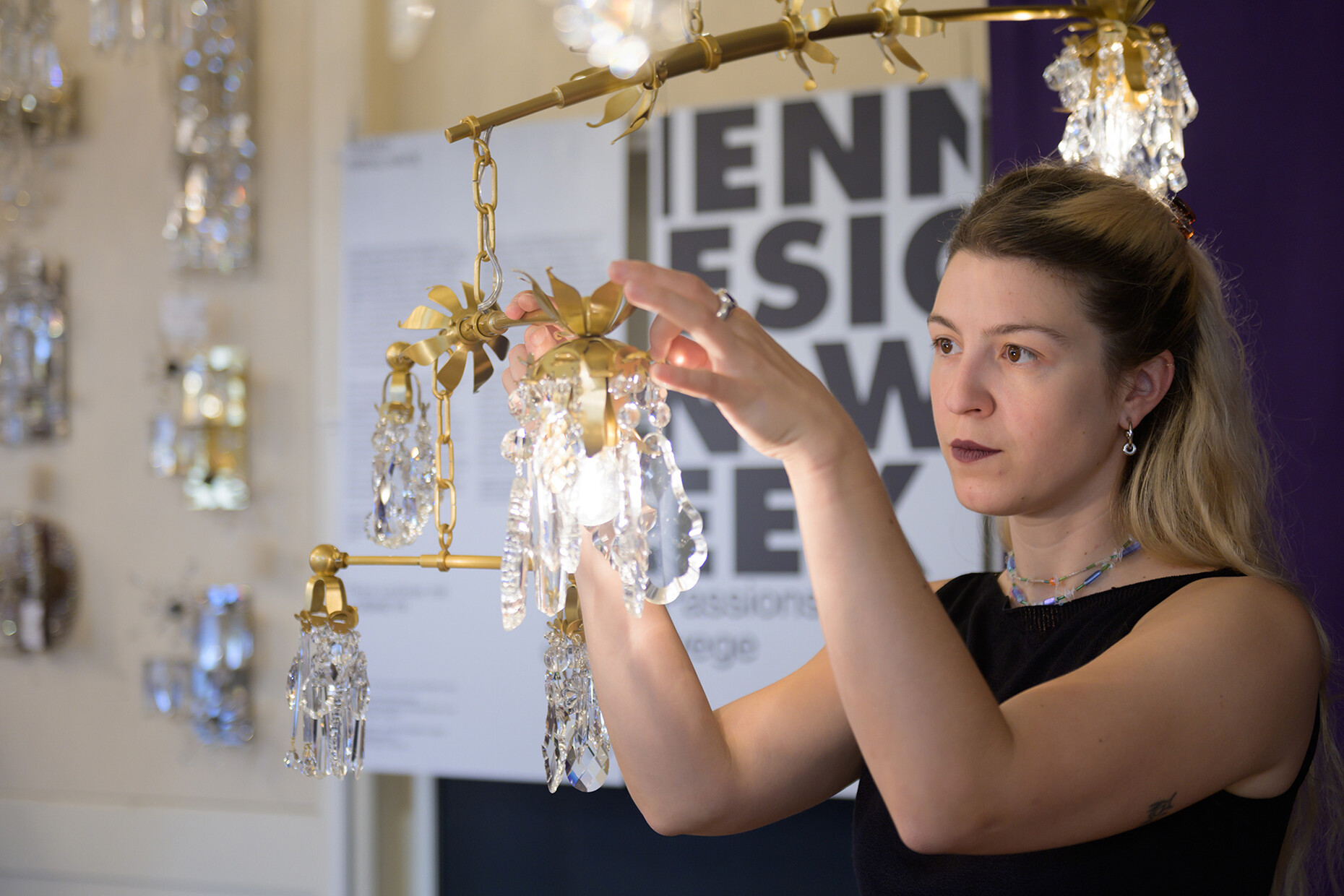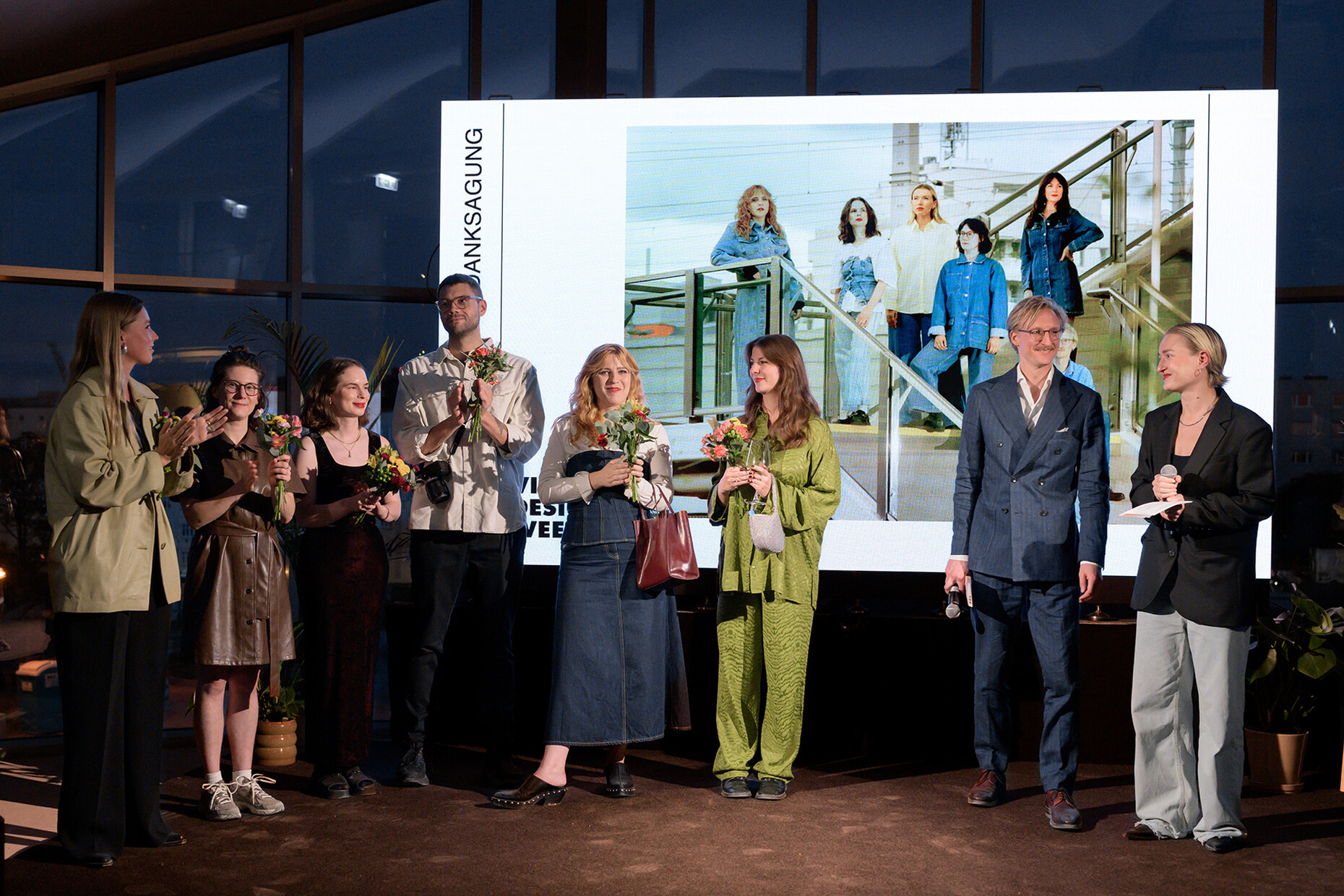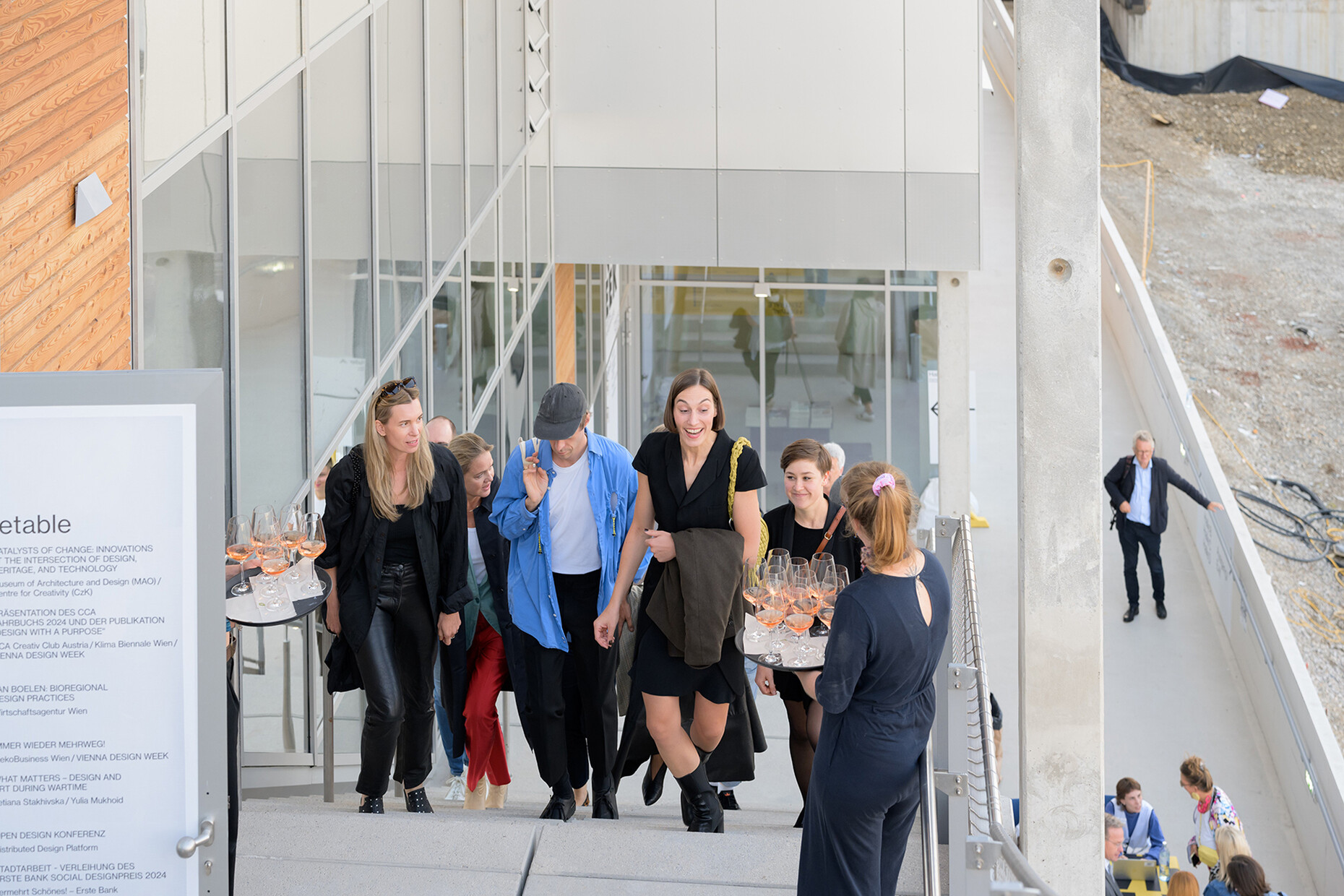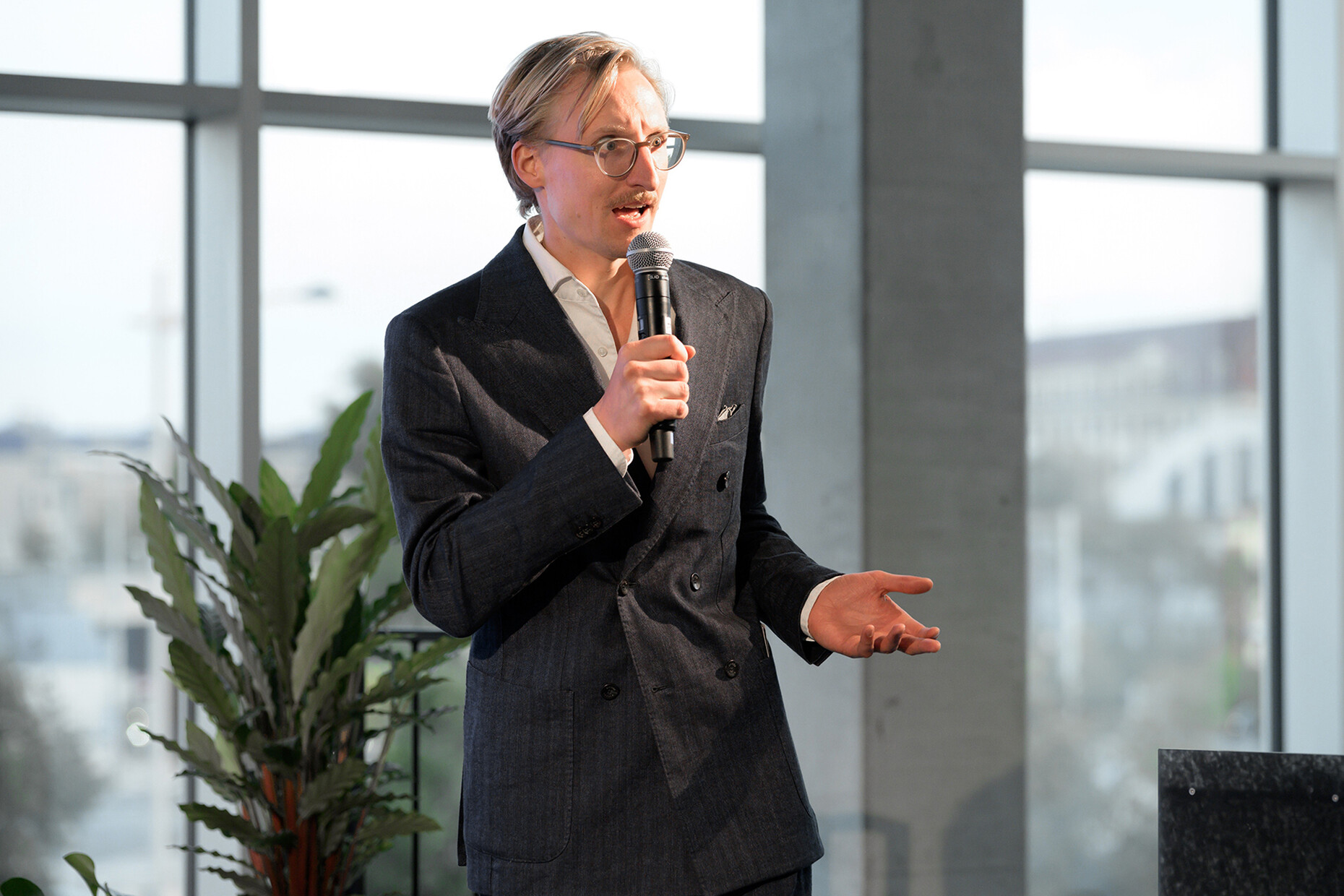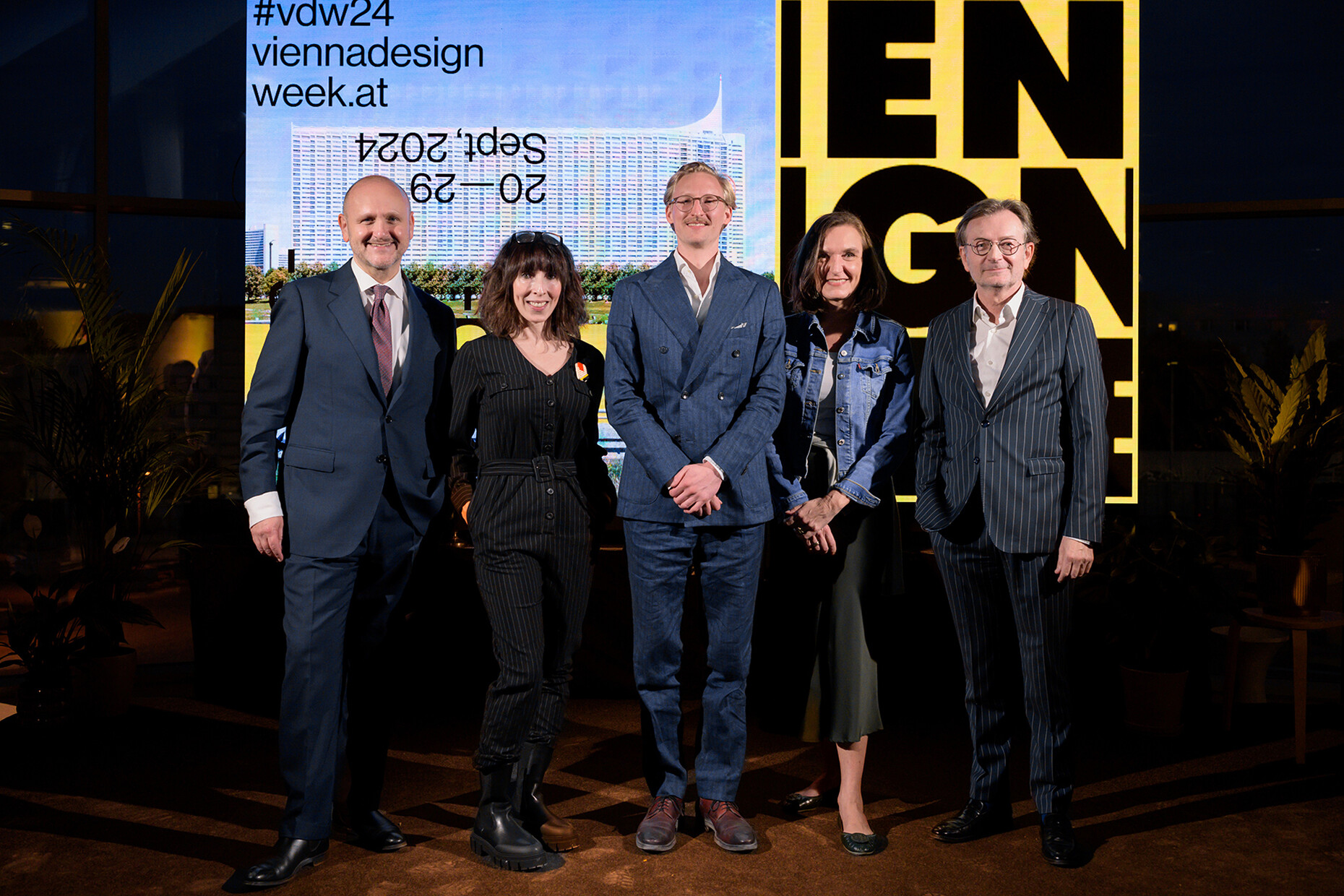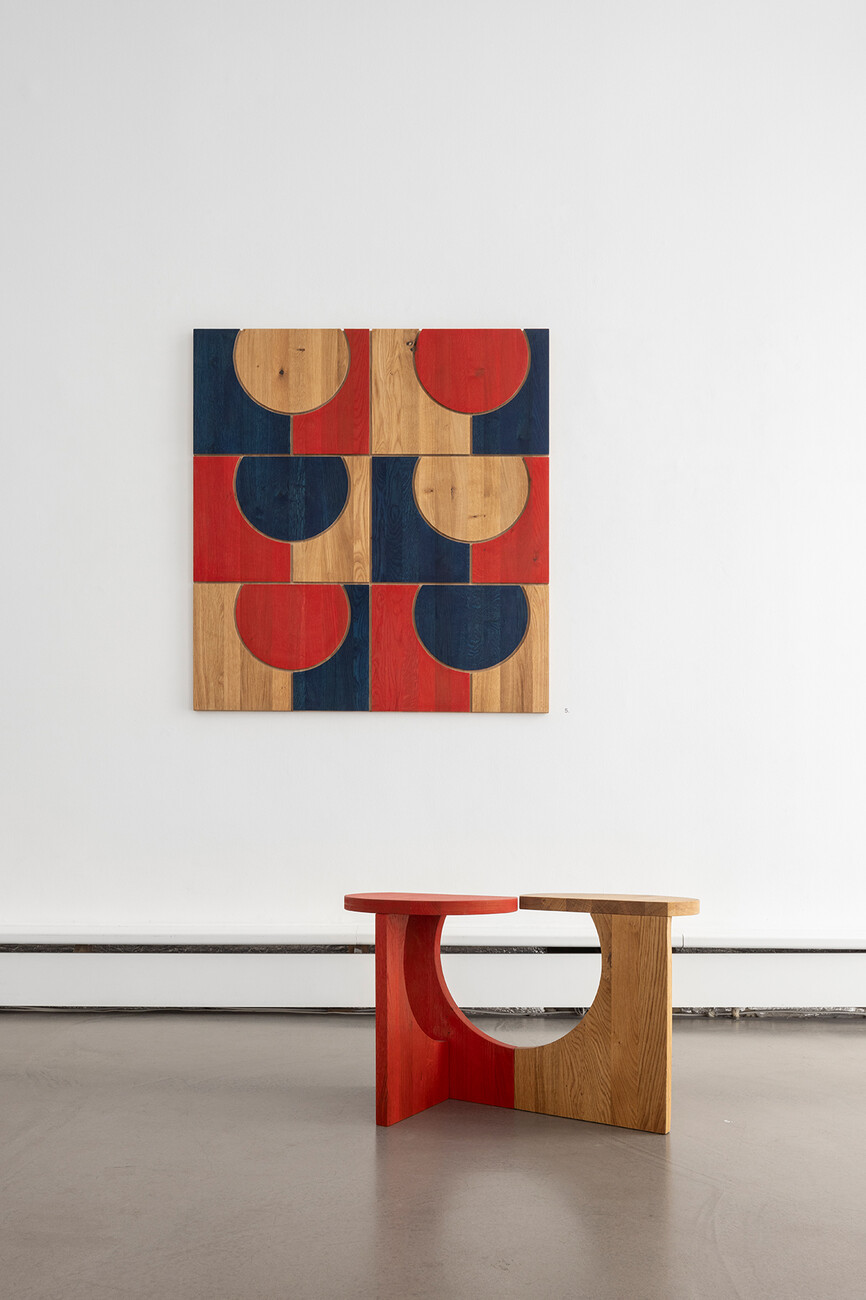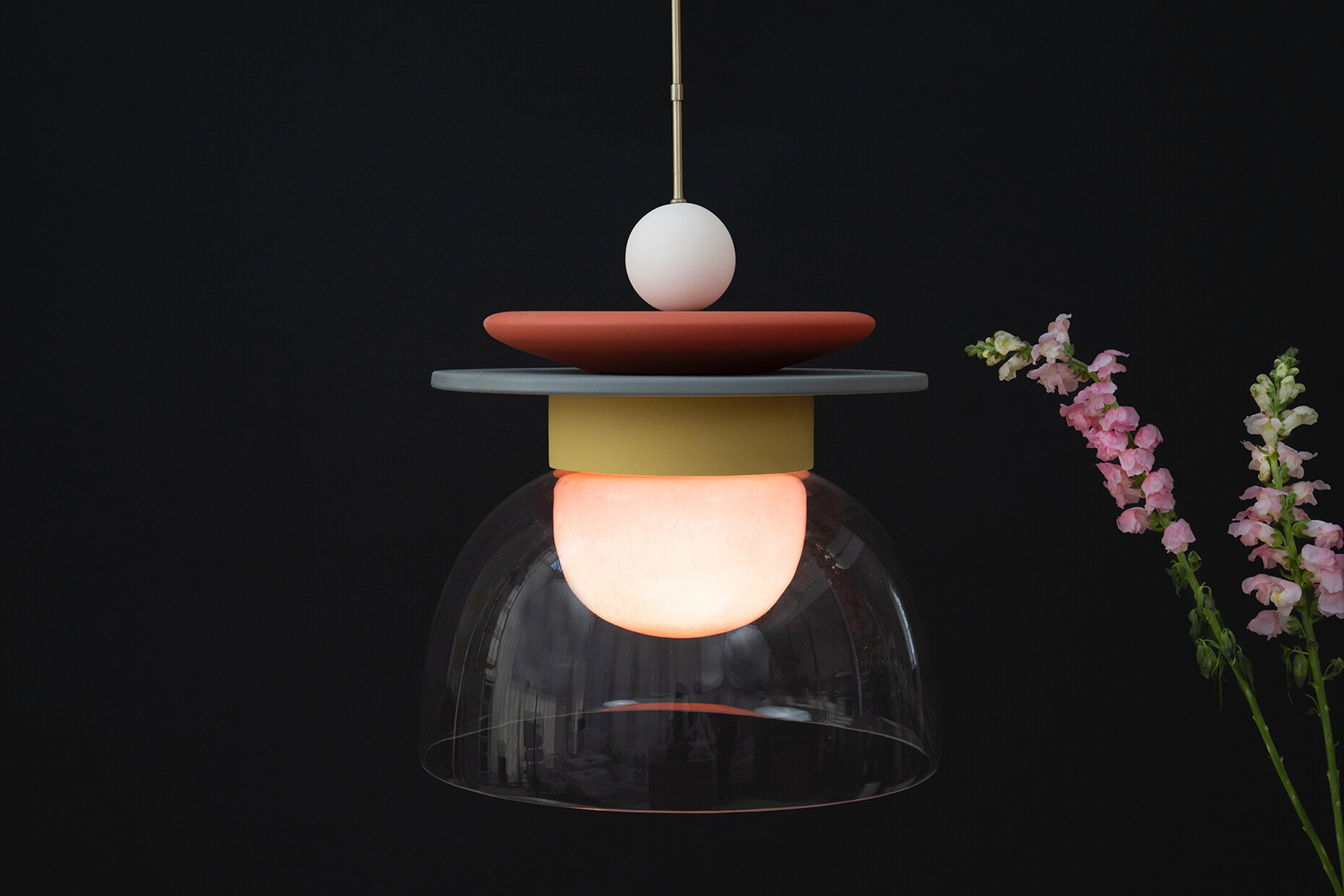VIENNA DESIGN WEEK 2024 – REVIEW
Applied to Experimental
Gabriel Roland and his team have curated a rich programme that sees itself as an experimental platform. "If a trade fair is the potency of the practical everyday life of the design industry, a festival should be like Christmas," he reflects on the eve of the opening. "Everything is different at Christmas, you give instead of taking, you come to rest and have time instead of rushing. And in the best-case scenario, you should carry a little bit of this wonderful state of exception over into your everyday life." The festival succeeds in being experimental and yet approachable by utilising a special location with exhibitions on various themes on the one hand and radiating into the city with low-threshold offers on the other. The Design Festival, now in its 18th edition, attracts around 40,000 visitors to the Austrian capital every year.
This year, the festival centre is located in the middle of the Landstraße focus district and, unlike usual, it is occupying a new building before its first occupancy. Designed by architects Artec, the "Docks" is the first completed part of the so-called Village im Dritten. Located on the corner of Landstraßer Gürtel and Landstraßer Hauptstraße, it will be home to 4,000 people. Thanks to Vienna Design Week, the building is already coming to life in advance: a colourful bouquet of design is being presented in a total of four halls. The "Design Everyday" exhibition provides an insight into the regular activities of Austrian design studios and demonstrates the potential of the local design scene. The three teams selected by Erste Bank for the Stadtarbeit project under the slogan "Vermehrt Schönes!" (More beautiful things!) deal with food waste and the possibility of using it (Kiosk T//Waste), with the connections between fictional and real experiences in urban space (An Urban Legend to Be) or with local microclimatic conditions in a city (Wiener Klimahöfe). For the latter, Future Problems Architecture Studio has mapped the hours of sunshine measured in the city. Using a colour system, it is possible to see both on the city map and by means of textiles hung up in the urban space where the local maximum of 800 hours of sunshine is located, down to the minimum marked in blue with a maximum of two hours. The programme also includes countless talks and walks, and on 26 September the Erste Bank Social Design Award will be presented for the tenth time.
In the "Focus: Trash" exhibition, curated by Nina Sieverding and Anton Rahlwes, you can discover lights made from recycled candle wax, salami flowers as hair accessories and Viennese wickerwork made from plastic. A more applied approach can be found on the balcony, where, alongside solid carpentry furniture by Brauchst from Gratkorn, you can find lamps by Sphaer, which create a warm light with their pink-coloured glass spheres. Handmade in sophisticated collaborations, such as with product designer Bade Erol, who works in Istanbul, founder and product designer Leni Piëch aims to transform the powers of Greek goddesses into light with this collection.
The focus of Studio Red's contribution was less on functional than formal aspects, but it is the playful component of the classic four room elements – table, chair, bed and shelf – that makes you want to try them out. The shelving unit in particular, whose stacked cubes can be moved on rails, encourages you to use it. The human presence is evoked by Florian Appelt's artworks. He has cut a shape out of foam with hot wire, which in this case is intended to embody the spine and thus represents a person resting on a dysfunctionally sloping bed. Ikea's "Dare to dream" exhibition also presents new forms of reclining – the contribution by artist Oliver-Selim Boualam evokes childhood memories: for BEEEEEEEEEETT, he has transformed the "Hemnes" bed frame into a cradle for adults on which you can be rocked to sleep.
Theoretical ideas as well as practical realisations are present in the many positions, which are clearly structured in the new build and show the broad spectrum of contemporary experimental design. In the hospitality area of the festival centre, the aim of using the city as a resource is put into practice. The newly founded Studio dreiSt has fabricated tables, chairs and a bar from local materials, such as excavated material from a Wiener Linien construction site. Architecture graduates Sophie Coqui, Luisa Zwetkow and Martin Kohlbauer spent six weeks creating the scenery by hand. Custom-made bricks form variable tables, stools and a bar, while Mycelium grows on woven textiles to form room-dividing panels. Together with various partners such as Biofabrique, which in turn learns from Atelier Luma from Camargue, a new branch of the network for circular, bioregional construction is being created here. "The Danube, for example, is regularly cleared of algae growth in order to keep the navigation channel clear, resulting in huge amounts of organic material. At the moment, this is considered waste immediately after cutting and has to be disposed of accordingly, but Vienna's waste management is also enthusiastic about the ideas and opportunities that open up in such places," says Elisabeth Noever-Ginthoer from the Vienna Business Agency, which is supporting the project. In the meantime, Biofabrique has created 100 recipes for building materials, 20 of which are already being tested.
Networking and inspiring synergies are the focus of the Passionswege, which bring together Viennese craft businesses with designers from other fields. Lobmeyr has been part of Vienna Design Week since the very beginning. "This year, for the first time, a chandelier is the result of the collaboration," says co-owner Leonid Rath. Flora Lechner worked on the chandelier for "Intamed Balance" – and thought about the balance: "I work a lot with metal, and when I visited Lobmeyr's workshops for the first time, I found it incredibly fascinating that there is so much metalwork involved, but the glass takes centre stage in the end result. I wanted to create a balance between the two materials." The young artist has translated this balance into the formal language of a mobile, with the floral elements symbolising the fact that the structure can continue to grow. Flora Lechner has wired the crystals herself, which are not fixed and can therefore be hung individually.
Like Lobmeyr's workshops, Kirsten Lubach's studio is also located in the third district. She is the only remaining engraver in Vienna and was part of the Passionswege for the first time in a duo with designer Alexandre Delasalle. "I love pushing the boundaries of technology," reveals the Viennese by choice. With Alexandre Delasalle, she shares an interest in visual language and characters. In a wild potpourri, ranging from classic ornaments from the Kupferstichkabinett's archives to manga figures and advertising photographs from supermarkets, the two have created their own visual world – and printed it on silk. "Silk is a very delicate material and the knowledge of how to print on it has been lost," says Kirsten Lubach. Visitors can still experience how their work works in practice at two show printing sessions.
The Polish Institute in the first district is hosting the exhibition "Sustainability and Accessibility", for which works by students and graduates of the Academy of Fine Arts in Krakow have been brought together. These include Jakub Święcicki's work "Touching the City", for which he transferred the structure of metalwork on Polish gates into a tangible image. This enables blind people to feel their overall appearance on paper or textiles. Olga Konik has dedicated herself to repairing: Fascinated by creating something new from something old, she offers workshops for young people, for example, and tries her hand at a wide variety of products, from old aprons to iPhones.
Laufen has its showroom one street away and is showing the "Colour Archeology" exhibition before it is presented in the other Laufen Spaces. Roberto Sironi has spent many years researching historical colours from all cultural regions to create a new palette that can be used to customise Laufen products for the contract sector. "The Social Hub" is also located not far from the Praterstern. As a place for new forms of communal living, the building provides the perfect space for Gonzalo Vaíllo's temporary architecture, for which the founder of Morphtopia has assembled urban construction waste into an installation. Without a primary function, he wants to leave this to the users.
The MAK – Museum of Applied Arts takes a more documentary approach. There you can marvel at the photographic work of Adam Štech, who has compiled the architectural elements in international contexts into a huge walk-in image archive. One floor below, the AUT NOW exhibition recently opened, bringing together a total of 100 Austrian design products. Georg Schnitzer and Peter Umgeher from Vandasye, together with curator Marlies Wirth, have organised selected designs from the last 25 years into a refreshing grid and created a total of 25 categories – from "alpine" to "circular". Not far from here, the Ecker furniture store on Schubertring, whose showroom was recently opened, is well worth a visit. The Séparée has been designed under the motto "Italy meets Japan in Vienna" and combines furniture from the brands Boffi, De Padova and Time & Style – restored with traditional craftsmanship, the rooms invite you to linger.
The work of the Industrial Design class at the University of Applied Arts can also be explored during Vienna Design Week: Under the direction of their professor Stefan Diez, the students have been examining the theme of travelling. The results of their explorations is presented in a fictitious travel agency called "Diez Reisen". "Throughout the semester, we looked at how people travel. Actually, we only had the instruction to go somewhere and come back before the end of the semester. Everyone was free to do what they wanted and to find out which journeys they wanted to go on," explains student Valentin Bauer. The result makes it clear: travelling reveals essential needs, travelling educates and travelling makes you creative. You can still travel to Vienna Design Week until 29 September 2024 and confirm this for yourself.
